John C. Horst's Blog, page 36
September 20, 2012
Maria's Trail and Pedro, The Rurale
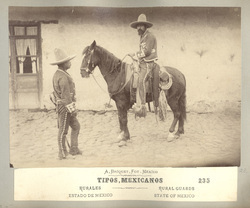 The Abel Briquet Photograph Collection In Maria's Trail, we learn of a particularly bad hombre, known as Pendejo Pedro, the Rurale. According to The Bengal Club;
The Abel Briquet Photograph Collection In Maria's Trail, we learn of a particularly bad hombre, known as Pendejo Pedro, the Rurale. According to The Bengal Club;"The RURALES, or Gendarmeria Fiscal "Rurales," or state police delegated to law enforcement in the countryside, had existed in Mexico since the 1840's. However, these country police were sort of re-founded as the "Gendarmeria Fiscal" in 1885 by the then president of Mexico Porifirio Diaz. He promoted it as an elite unit of military police controlled directly by the Ministry of Finance. However, in reality the Gendarmeria Fiscal answered only to President Diaz. It was the 'Great Dictator', and only he, who had the authority to appoint or promote officers of the gendarmeria. This was because he needed to insure the complete loyalty of an organization that also served as his unofficial secret police force. The gendarmeria provided him with very complete reports on just about everything and everyone in Mexico. Furthermore, under the guise of law enforcement, and with very little encouragement necessary from the president, the gendarmeria permanently disposed of troublesome dissidents. They appear to have been a really handy group for a dictator like Diaz to have around.
The gendarmeria's official job was to protect payrolls, chase Indians, catch smugglers, and defend banks along the national frontier. Or to quote from their foundation charter of 1885, "The exclusive purpose of the Rurale Police is to maintain security on the highways, assist the city police, protect the safety of all citizens, prevent transgressions of the law, pursue apprehend and place at the disposal of the authorities all criminals." Troopers served four year enlistments, were considered to be "perpetually on duty," and were to remain constantly armed. The minimum weaponry permitted was describe as "at least a saber." Their nickname 'Rurales' was later justified because they were always patrolling the countryside and never in garrison. A second nickname for the gendarmeria was the 'Cordada'. This title has never been fully explained, although it probably has something to do with the verb cordar to rope. Kosterlitzky was sometimes referred to as 'Juez de Cordada' (Judge of the roped ones). Suggestions that the name grew out of the rurales affinity for hanging suspects founders on their actual preference for the 'El ley de fugo' (shot while trying to escape). Much hearty laughter was enjoyed by the enlisted men over this practice at suspects' expense. The most common joke being, "He got away, but just a little away."
If the officers of the gendarmeria were a hand-picked elite the enlisted men were, well, they were the scum of the earth, as their previously described taste in humor might suggest. Official documents stressed the high standards required of al recruits, however, the theory amongst most civilians was that a conscious effort was made by all gendarmeria officers to recruit men of the most horrifying, abysmally low character possible. Kosterlitzky had a personal preference for convicted murderers. The plan seems to have been to form a nation wide organization along the lines of the 'Dirty Dozen'. New recruits were issued with a light grey undress uniform and a large grey sombrero unless, as the story goes, they had been serving a murder sentence in which case they were given a black sombrero. A quick scan through photos of the rurales on campaign reveals black hats showing up with what contemporaries called a terrifying frequency." Source ~ The Bengal Club.
Published on September 20, 2012 07:21
September 19, 2012
Maria's Trail and Poker Alice, Truth is Stranger Than Fiction
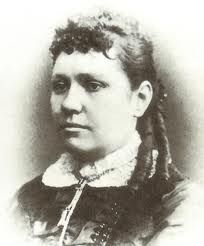 In Maria's Trail, we learn of Chica's remarkable gift at playing cards. There was a real-life lady gambler in the form of Poker Alice. According to Poker Player News:
In Maria's Trail, we learn of Chica's remarkable gift at playing cards. There was a real-life lady gambler in the form of Poker Alice. According to Poker Player News:"Despite a popular misconception, men did not win the West alone. Women were there too.
Almost exclusively a male activity, gambling thrived among the miners, loggers and cowboys of the American frontier. "Gamblin'," as one boomtown bartender remembered it, "was a man's job, like fightin' or steer ropin'."
Yet, there were a few women whose circumstances and inclination led them to become professional gamblers. These ladies were not only a very small minority, but they were often colorful, independent, exceptional women. They met the West on its own terms, competing and gambling, winning and losing with the courage, tenacity and foolishness equal to any man.
Among the most famous women gamblers of the frontier was Poker Alice. Nicknamed for her game of choice, she is estimated to have won over $225,000 during her 60- year career as a professional poker player in the latter half of the 1800s.
Alice Ivers was born in England in 1851 and immigrated to America with her parents when she was three years old. The only daughter of a schoolmaster, she was educated at a fashionable women's seminary in the South and brought up to be a respected lady of society.
Alice was in her teens when she moved West with her family to Colorado. At the age of 20, she married a man of means and education, mining engineer Frank Duffield.
Gambling was a principal leisure activity in mining camps and Frank was an enthusiastic player. Rather than sit home alone in the evenings, Alice often accompanied her husband to the betting tables. Among the games, Alice found Poker to be most interesting.
Eventually she learned to play and would occasionally sit in a game.
Leadville was the center of action when Alice and Frank moved there. With 35,000 inhabitants, it was the largest mining town in Colorado and, according to historian Herbert Asbury, "the most lawless". It was here that Frank was killed in a mine explosion. A petite 5'4" beauty with blue eyes and long, lush brown hair, lovely young Alice suddenly found herself all alone in one of the most harsh, raw hell-holes on the western frontier. The few jobs available to women did not appeal to her. She was not accustomed to hard labor and prostitution was unacceptable to a woman of her breeding and education. Unable to get a job teaching in the small town, Alice decided to bank her survival on gambling. She preferred to deal and play Poker but became skilled at Faro as well. The talented young beauty soon acquired the nickname "Poker Alice" and eventually became the most famous woman gambler of the American West.
Poker Alice, one biographer tells us, "was not a prostitute... but a professional woman... engaged in what was considered man's work." She wore the latest fashions, had a peculiar like for cigars, and never gambled on Sundays.
So rare was a female professional gambler, particularly one of such feminine beauty, Alice received many offers from gambling halls throughout the West. During the 1880s and '90s, she traveled by stagecoach dealing Faro and Poker in the most notorious frontier towns.
In Silver City, New Mexico, Alice broke the bank at the Gold Dust Gambling House winning $6,000 in one evening. Consequently, they hired her to deal. In Creede, Colorado, she dealt to miners in Bob Ford's tent saloon. Ford was the killer of Jesse James.
On the frontier, there were few honest games. Professional gamblers took every advantage. Alice's motto was, "Praise the Lord and place your bets. I'll take your money with no regrets."
Alice fell in love with a dealer, W.G. Tubbs, and he became her second husband. Eventually they settled near Deadwood, SD, and Alice gave up her profession. During the winter of 1910, her husband caught pneumonia and died. She loaded his frozen body onto a wagon and drove the team almost 50 miles in blizzard conditions to Deadwood where she pawned her wedding ring for $25 to pay for his burial and get enough for a stake.
Poker Alice returned to the gambling halls to support herself. During Prohibition she ran a roadhouse in Sturgis, SD, called "Poker's Palace" that was popular with soldiers from Fort Meade. Although in her 70s, she shot and killed a 4th Calvary trooper one night. There was a trial, and she was acquitted by virtue of self-defense.
But the years of gambling and traveling from one rough town to the next took its toll. Gone was her beauty; gone too were her fashionable gowns, sold or pawned to finance her gambling pursuits. Her hair grey, she wore khaki skirts and men's shirts. Old Alice bumped around the West for a few more years dealing in dives and occasionally featured at some event like the Diamond Jubilee, in Omaha, as a legendary relic of the frontier. "At my age I suppose I should be knitting," she'd say, "But I would rather play poker with fiver or six 'experts' than eat."
Poker Alice, nearly 80, died in 1930 and was buried in Sturgis. A woman of independent spirit, uncommon ability and rare courage, Alice was not only a player she was an exceptional American." Source ~ Pokerplayernews.com
Published on September 19, 2012 07:35
September 18, 2012
Maria's Trail, The Early Adventures of Chica, Heroine of The Mule Tamer Trilogy (NOW AVAILABLE!)
 Prequel to The Mule Tamer trilogy, Maria’s Trail chronicles the first adventures of Senora Arvel Walsh. Chica, Artemis, the beautiful devil, she is the great tragic heroine of The Mule Tamer saga. Follow this remarkable woman as she journeys through the first adventures of her life, suffering hardship and pain, loss and danger, betrayal and first love. Her exploits are legendary and it soon becomes evident why everyone who comes under her spell can only love her. Maria’s Trail is a long and tumultuous one, essential to make the glorious Maria the remarkable creature that we’ve come to know and love.
Prequel to The Mule Tamer trilogy, Maria’s Trail chronicles the first adventures of Senora Arvel Walsh. Chica, Artemis, the beautiful devil, she is the great tragic heroine of The Mule Tamer saga. Follow this remarkable woman as she journeys through the first adventures of her life, suffering hardship and pain, loss and danger, betrayal and first love. Her exploits are legendary and it soon becomes evident why everyone who comes under her spell can only love her. Maria’s Trail is a long and tumultuous one, essential to make the glorious Maria the remarkable creature that we’ve come to know and love. Maria's Trail is now available here, at Amazon.com.
Published on September 18, 2012 09:34
September 8, 2012
The Corrido and The Mule Tamer
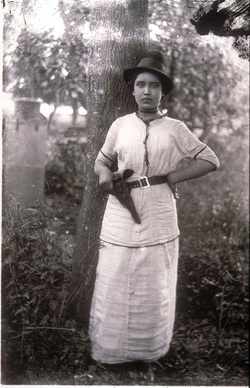 Agustín Víctor Casasola In The Mule Tamer III, Marta's Quest, Rebecca and Marta sing the famous Corrido La Adelita.
Agustín Víctor Casasola In The Mule Tamer III, Marta's Quest, Rebecca and Marta sing the famous Corrido La Adelita. According to Poemas del rio wang; "This is one of the most famous Mexican corridos. The Revolution was not only the case of the soldiers. The troops were also followed by women and children who took care of the solders and feeded them, healed the ill and the wounded, etc.
The corridos are the Mexican offsprings of the Spanish romance. They express feelings and ideas, triumphs and defeats, pains and happiness which are so overflowing to constitute a collective importance for the Mexican folk. The corrido is the language of the people. At one time it played the role of the press: the news used to spread all over the countryside in songs, rather than in newspapers which were no important sources of information in an overwhelmingly illiterate country. Only the most important events or the great personalities deserved to be sung about in a corrido, but they sometimes also immortalize scenes of the everyday life of the internal parts of the country.
The corrido is characterized by spontaneity, and by a simple language and melody. It uses few poetic tools, but it is very concise, and gives more importance to the rhythm than to the form. Its classical form is the quatrain 8a 8b 8a 8b which also permits more than one poems to be sung with the same melody. This is why they can also easily be modified and actualized, so that one corrido lives on in several versions.
According to the man of letters, politician, speaker and poet of native Mexican blood Andrés Henestrosa, the circumstances favorable to the birth of the corrido were provided by the formation of national feeling and identity. It was born together with the Independence, but it reached its climax during the Revolution, with the collective rejection of “Porfirism” that took its name from the Mexican dictator Porfirio Díaz (1876-1911) and of forced Europization (Díaz was one of the great promoters of French culture among the Mexican high society). This was the longest and most supported phase of national rebirth, the one with the deepest roots in Mexican reality, and therefore the most popular one."
Published on September 08, 2012 18:35
September 7, 2012
The Mule Tamer and Margarita Neri; Another Truth is Stranger Than Fiction
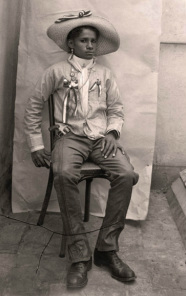 Photo Source ~ DoubleTalk, Cheryl McMullen In The Mule Tamer III, Marta's Quest we see both Marta and Rebecca engaged in many heroic and martial endeavors.
Photo Source ~ DoubleTalk, Cheryl McMullen In The Mule Tamer III, Marta's Quest we see both Marta and Rebecca engaged in many heroic and martial endeavors. During the period of our story's setting there were many real women soldiers who carried out remarkable feats in support of their cause.
"One of the most famous female soldiers was Margarita Neri, who became a legendary Zapatista commander. 'So many legends surround Neri that she is portrayed as both commanding Zapatistas in Morelos and as cutting off the ears of Zapatistas sent to recruit her. Despite the mass of contradictory accounts, it seems that Margarita Neri was a capable and respected guerrilla commander,' (Soto, 45). Macias recounts the not unusual difficulties of officer La Coronela María de la Luz Espinosa Barrera's unusual mannerisms and problems adapting to a socially acceptable lifestyle after the Revolution: 'A restless soul, La Coronela became an itinerant vendor of clothing and found it impossible to conform to the accepted female role of passivity and timidity. La Coronela smoked, drank, gambled, and feared no man.' (75). Although many female soldiers fought bravely and were killed in battle, and others continued to wear men's clothing and carry pistols long after the Revolution ended, La Coronela was one of the very few who received a pension as a veteran of the Mexican Revolution (Macias, 75). Unlike the Soldaderas, most female soldiers were registered in the army rosters and could climb up in the ranks (Reséndez, 546), but similarly to the Soldaderas, few female combatants were recognized for their contribution, either through military pensions or otherwise, and most died in poverty (551). "
Source ~ Revolutionary Women:
From Soldaderas to Comandantas
The Roles of Women in the Mexican Revolution and in the Current Zapatista Movement, Diane Goetze
Published on September 07, 2012 17:13
September 6, 2012
Jack London and the Soldadera
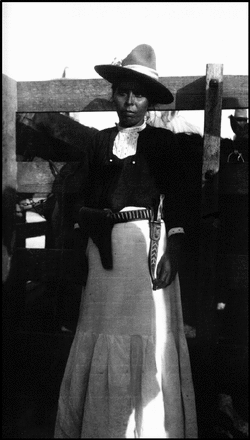 In The Mule Tamer III, Marta's Quest we get a glimpse into the lives of the soldaderas, the women fighters of the Mexican Revolution. Here we see an example of one of these fighters in the form of a photograph taken by the famous Jack London.
In The Mule Tamer III, Marta's Quest we get a glimpse into the lives of the soldaderas, the women fighters of the Mexican Revolution. Here we see an example of one of these fighters in the form of a photograph taken by the famous Jack London. "In his forty or so years on earth, Jack London proved to be an indefatigable roustabout. Not only did he write five novels, dozens of short stories, articles and essays for newspapers and magazines ... all the while he was traveling to such exotic places as the Solomon Islands, Bora Bora, the Marquesas, and even Korea (to report on the Russo-Japanese War). He was also stomping America on behalf of Socialism and, meantime, built his own sloop --- the Snark --- and sailed with it and a crew of eight to the South Pacific. And he managed a 1,000 acre ranch in California, lived stylishly, paying for it all by means of a steady stream of books, stories, sports stories, didactic writings, and war reports. Now, we find, on top of all that, that, from 1903 until his death (in 1916), he took, developed, and printed over 12,000 photographs, using a simple bellows folding camera --- the Kodak 3A. Jack London, Photographer, offers 200 of his pictures, including a few bemused ones of Jack London. He proves to be a handsome fellow, with a shock of dark hair, an endearing smile ... appearing to be every bit of a real charmer, not that much different than a young, roguish Jack Kennedy."
--- Richard Saturday
Source ~ www.ralphmag.org
Published on September 06, 2012 04:33
September 5, 2012
5 Star Review for The Mule Tamer
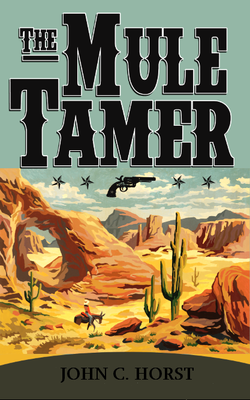 C B
's review Sep 03, 12
C B
's review Sep 03, 12 Really enjoyed it, both Arvel and Chica are excellent characters well fleshed out.
Will definitely read the sequels.
Love a good western!!
Published on September 05, 2012 12:57
September 4, 2012
Latest Goodreads 5 Star review for The Mule Tamer II, Chica's Ride
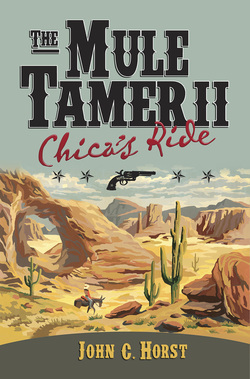 Hilola
's review Aug 29, 12
Hilola
's review Aug 29, 12 When reviewing the first book in the series I thought it was wild and I loved it. Got to say this one is a lot more violent than the previous one. I somehow don't mind reading (fictive) stories about violence against adults but when it comes to children it can get too overwhelming for me. Just like in this case. There is a 5 years old boy. The reader likes him already pitying him for having such an unloving mother. The author goes in much details making him even more likeable to a reader. And then.. bang! No, he doesn't get killed. But what he goes through made me stop reading, go fetch a glass of water, walk around the house and come back an hour later to find out little boy's fate. I got so protective over this boy that I even thought there would have been less damage in general if it were Rebecca instead of him although they both are children. I guess this is the strength of the author that he managed to get under reader's (in this case my) skin with the story and the characters. Bravo!
I cannot wait what John Horst will come up next. Thank you for the books.
Published on September 04, 2012 14:21
September 3, 2012
John Lincoln Clem, Another Mule Tamer Truth is Stranger Than Fiction
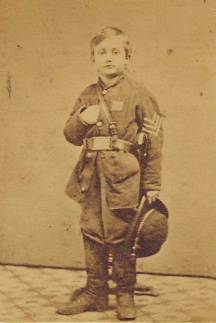 In The Mule Tamer Trilogy, we learn of Marta and Rebecca, two precocious and heroic children who carried out many feats of valor.
In The Mule Tamer Trilogy, we learn of Marta and Rebecca, two precocious and heroic children who carried out many feats of valor.During the Civil War there was a real-life child hero in the form of one John Lincoln Clem.
According to a 1915 New York Times News article,
Johnny Clem "Drummer Boy of Chickamauga" ran away from home to join the Union army in the spring of 1861, when he was not yet 10 years old. He was turned down because of his age by a couple of regiments passing through his Newark, Ohio, hometown before he tagged along with the 22nd Massachusetts, which eventually adopted him as their mascot and drummer boy. Officers of the unit reportedly chipped in on his $13 monthly salary, and fellow soldiers were said to have provided him with a shortened musket and a uniform in his size. He officially enlisted in the 22nd Massachusetts in May 1863 and received his own pay thereafter. On September 20, 1863, many members of the 22nd were captured in the Battle of Chickamauga, but Johnny made his escape after shooting a Rebel officer who was trying to capture him. Union Gen. George H. Thomas promoted Johnny to lance corporal. When the newspapers picked up his story, little Johnny became a celebrity in the North and was known as the "drummer boy of Chickamauga," and also "Johnny Shiloh," since he was alleged to have had his drum smashed by cannon fire in the Battle of Shiloh in 1862. In October 1863, John Clem was captured by Confederate cavalry while detailed as a train guard. He was exchanged a short time later. In January 1864, General Thomas assigned Johnny to his staff as a mounted orderly, and on September 19, 1864, Johnny was discharged from the army. In 1871, when Grant made him a 2nd lieutenant, Johnny began a second army term that did not end until he retired in 1915 with the rank of brigadier general. He was the last Civil War veteran on the army rolls at the time of his retirement. He died at the age of 85 in San Antonio, Tex., and was buried at Arlington National Cemetery.
Source ~ NYTimes.com
Published on September 03, 2012 18:28
September 2, 2012
Sgt. Reckless, Another Mule Tamer Truth is Stranger Than Fiction
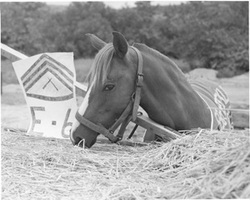 Photo Source ~ Sgt. Reckless In The Mule Tamer, Chica's beloved Alanza is a horse of remarkable courage and intelligence.
Photo Source ~ Sgt. Reckless In The Mule Tamer, Chica's beloved Alanza is a horse of remarkable courage and intelligence. There was a real life hero of the Korean War in the form of Sgt. Reckless, a diminutive Mongolian mare who served with distinction in the United State Marines.
According to Robin Hutton, author of the screenplay about this remarkable horse:
"One of Reckless’ finest hours came during the Battle of Outpost Vegas in March of 1953. At the time of this battle it was written that, “The savagery of the battle for the so-called Nevada Complex has never been equaled in Marine Corps history.” This particular battle “was to bring a cannonading and bombing seldom experienced in warfare … twenty-eight tons of bombs and hundreds of the largest shells turned the crest of Vegas into a smoking, death-pocked rubble.” And Reckless was in the middle of all of it.
Enemy soldiers could see her as she made her way across the deadly “no man’s land” rice paddies and up the steep 45-degree mountain trails that led to the firing sites. “It’s difficult to describe the elation and the boost in morale that little white-faced mare gave Marines as she outfoxed the enemy bringing vitally needed ammunition up the mountain,” Sgt. Maj. James E. Bobbitt recalled.
During this five-day battle, on one day alone she made 51 trips from the Ammunition Supply Point to the firing sites, 95% of the time by herself. She carried 386 rounds of ammunition (over 9,000 pounds – almost FIVE TONS! -- of ammunition), walked over 35 miles through open rice paddies and up steep mountains with enemy fire coming in at the rate of 500 rounds per minute. And as she so often did, she would carry wounded soldiers down the mountain to safety, unload them, get reloaded with ammo, and off she would go back up to the guns. She also provided a shield for several Marines who were trapped trying to make their way up to the front line. Wounded twice, she didn’t let that stop or slow her down.
What she did in this battle not only earned her the respect of all that served with her, but it got her promoted to Sergeant. Her heroics defined the word “Marine.” She was BELOVED by the Marines. They took care of her better than they took care of themselves – throwing their flak jackets over her to protect her when incoming was heavy, risking their own safety.
Her Military Decorations include two Purple Hearts, Good Conduct Medal, Presidential Unit Citation with star, National Defense Service Medal, Korean Service Medal, United Nations Service Medal, Navy Unit Commendation, and Republic of Korea Presidential Unit Citation, all of which she wore proudly on her red and gold blanket, along with a French Fourragere that the 5th Marines earned in WW1."
Source ~ Sgt. Reckless
Published on September 02, 2012 14:03



